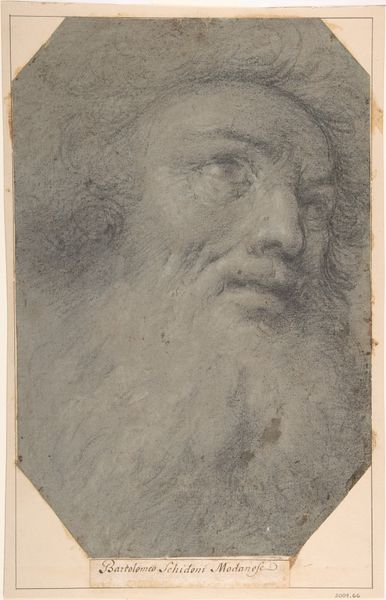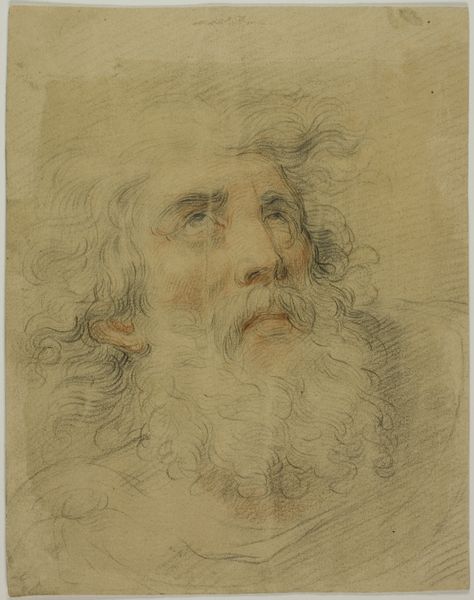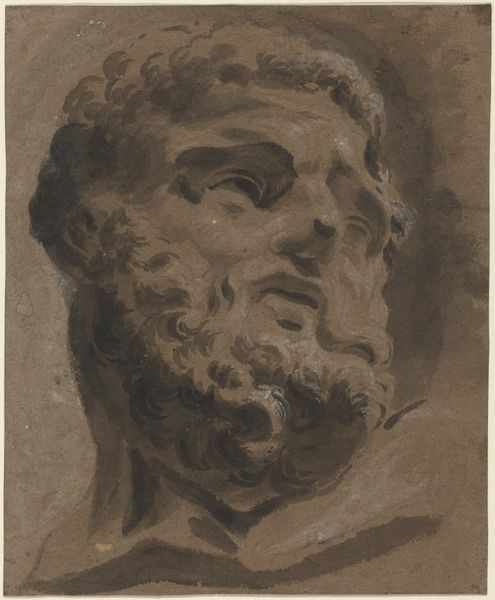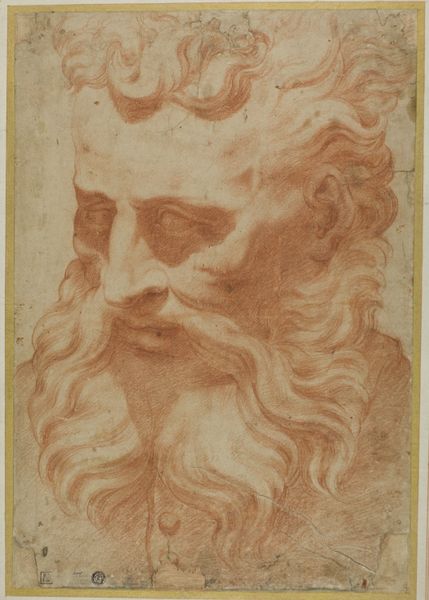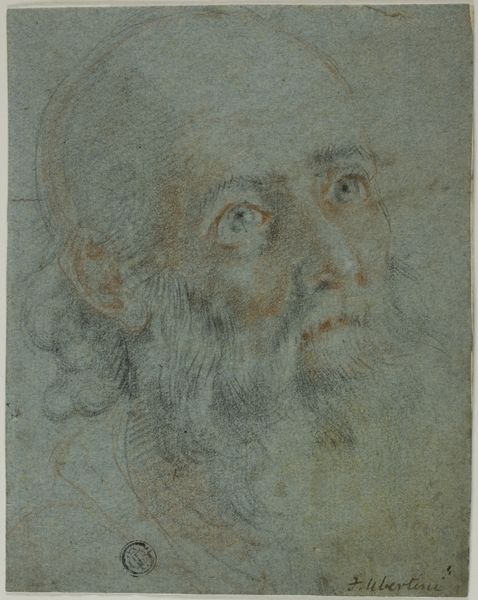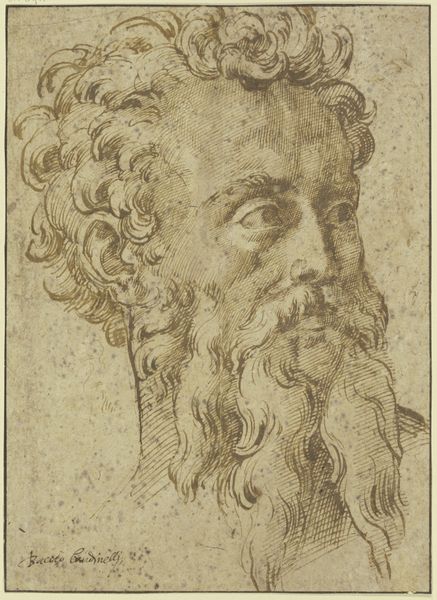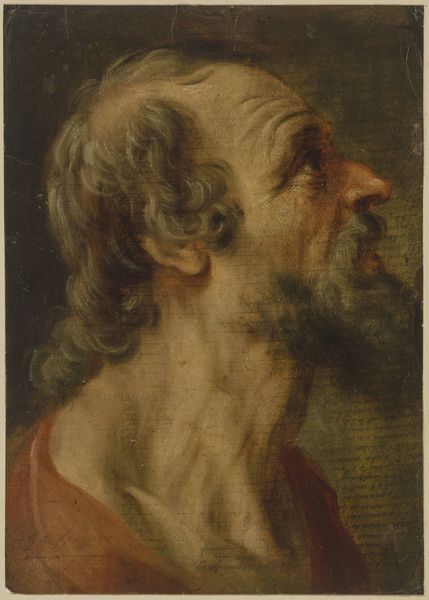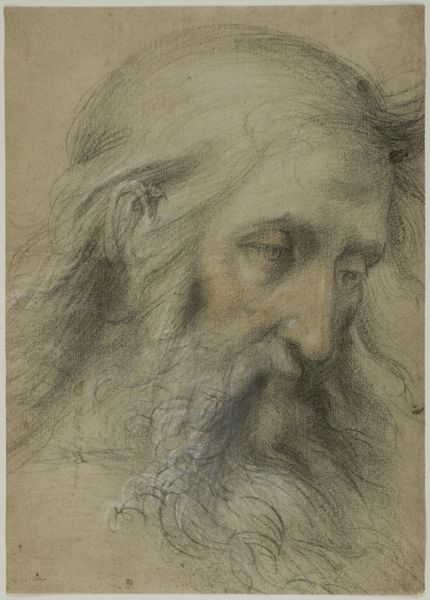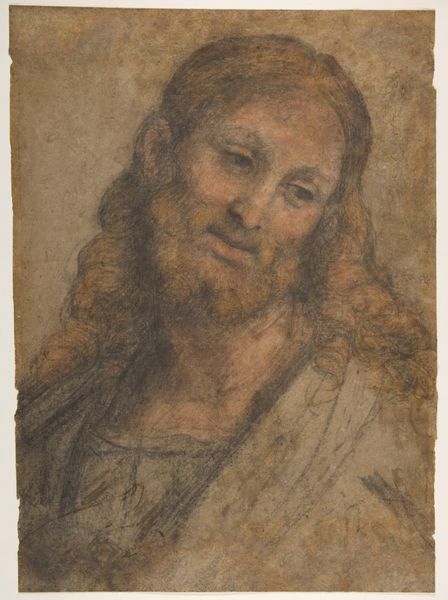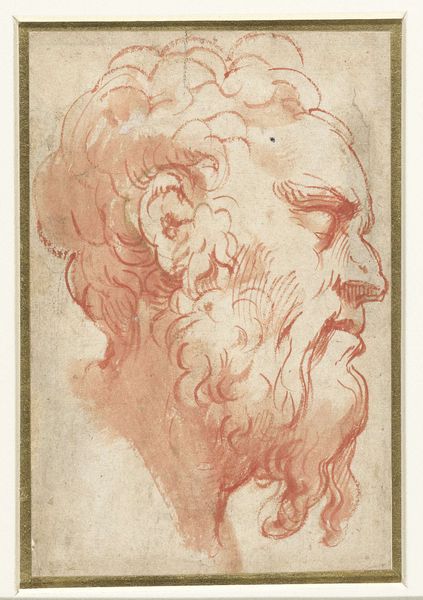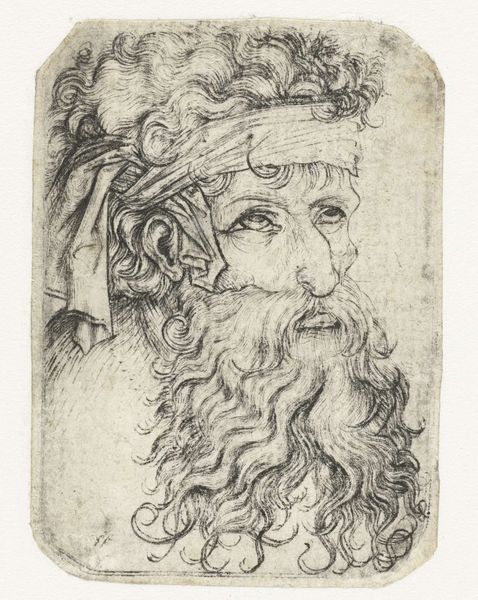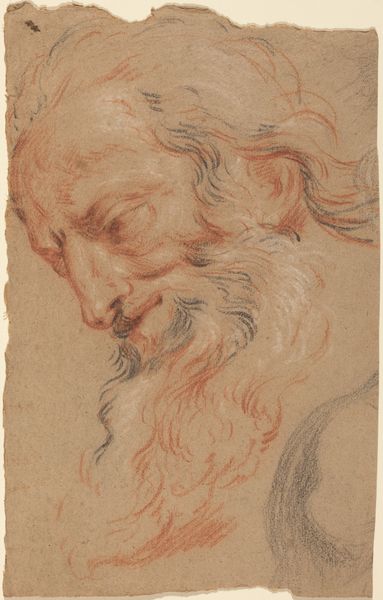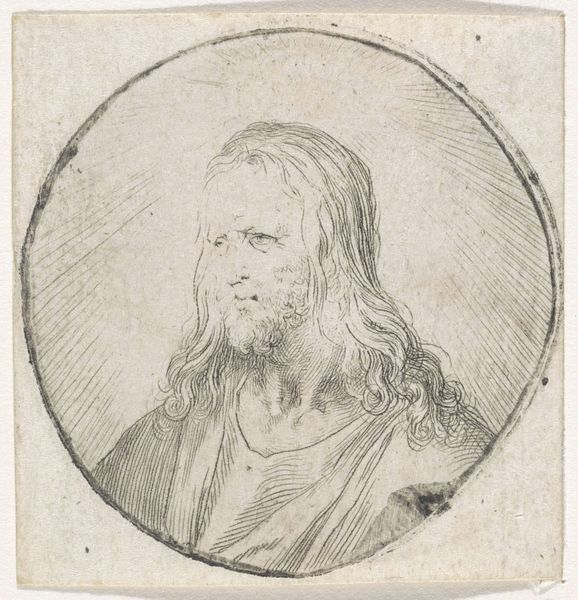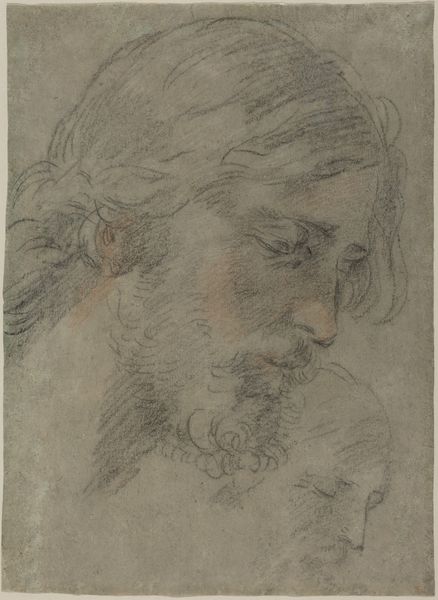
drawing, tempera, oil-paint
#
portrait
#
drawing
#
self-portrait
#
tempera
#
oil-paint
#
charcoal drawing
#
oil painting
#
underpainting
#
portrait drawing
#
italian-renaissance
#
portrait art
Dimensions: height 276 mm, width 205 mm
Copyright: Rijks Museum: Open Domain
Curator: This is "Head of a Man with Curly Hair, Facing Left" by Domenico Beccafumi, created between 1530 and 1535. It’s currently housed here at the Rijksmuseum. Editor: The subdued palette creates such an introspective, almost melancholic mood. The earth tones swirling around the figure give him this monumental but somewhat haunted feel. Curator: It’s compelling to consider the social position of artists during the Renaissance. Beccafumi, though highly respected, occupied a unique space in society. He was bound by the patronage system, but within it, he negotiated expressions of individual subjectivity, especially male identity. Editor: Absolutely. Notice the beard – in this era, facial hair carries potent symbolic weight. Beards denoted wisdom, virility, and maturity, projecting power, so here the symbolism of his facial hair alludes to the traditional and almost primordial symbolism that evokes prestige and gravity, and thus should be read as an expression of social standing and cultural memory. Curator: Exactly. This drawing can be interpreted not just as a simple portrait, but as a deliberate assertion of the artist's intellectual and social persona within the cultural politics of the Italian Renaissance. Beccafumi’s ability to portray psychological depth gives an indication of his insight and social position. Editor: What strikes me is the unfinished quality of the piece; the background bleeds into the figure, it really draws focus on the expressive intensity of the man's gaze. It invites endless interpretations. Curator: Indeed. By engaging with these layers of meaning, we understand this Renaissance artwork is not simply an artifact from the past, but an active participant in contemporary conversations about identity. Editor: Yes. Thinking about these lasting symbols certainly helps to contextualize its meaning for a modern audience, a potent expression echoing across the ages.
Comments
No comments
Be the first to comment and join the conversation on the ultimate creative platform.
